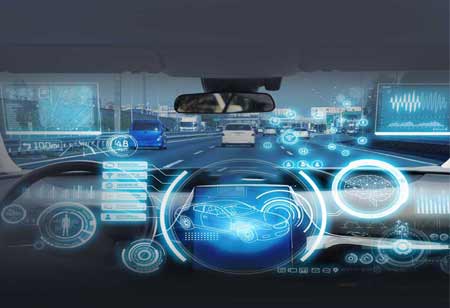THANK YOU FOR SUBSCRIBING
THANK YOU FOR SUBSCRIBING
Be first to read the latest tech news, Industry Leader's Insights, and CIO interviews of medium and large enterprises exclusively from Auto Tech Outlook

By
Auto Tech Outlook | Tuesday, October 17, 2023
Stay ahead of the industry with exclusive feature stories on the top companies, expert insights and the latest news delivered straight to your inbox. Subscribe today.
Auto suppliers must prioritise building core competencies in battery technology, power electronics, and electric motors to thrive in the shift to EVs.
FREMONT, CA: As businesses rush for decarbonisation agendas, the automotive world is increasingly defined by electric powertrains and digitisation. In response, suppliers must steer to subtle transitions. As electrification rolls out, various lightweight components like batteries and electric motors will experience strong growth. Although, the majority of parts will remain the same as they did in vehicles powered by internal combustion engines (ICE). As suppliers seek to unbolt new opportunities, they can create value by continuing to focus on the core.
In the forthcoming years, the light vehicle component market will evolve on twin paths. As electrification becomes more prevalent, amid increased automation and connectivity, demand for dynamics will shift. By 2030, electric vehicles and advanced electronic components, such as powertrains, advanced driver assistance systems (ADAS), and infotainment electronics account for 36 per cent, when compared with 11 per cent at present. Nevertheless, core vehicle components, including the axile system, suspension, body in white, and front-rear structure will remain the prime part of the equation.
The number of core components needed and the level of design modifications necessary will depend on several factors, including the speed at which customers demand electrification.
The Dominance of Core Revenues
Irrespective of the rising focus on electrification, core and ICE-based components still dominate across the light-vehicle supply firm. Certainly, 89 per cent of global tier-1 suppliers generate more than 90 per cent of their revenues from these categories.
Across the supplier cohort, there are four key archetypes, process-focused, portfolio conglomerates, new technology players, and ICE specialists. The largest share is controlled by process-focused players, accounting for 57 per cent of the total. These organisations rely on the core components for 89 per cent of their revenues. 20 per cent of the revenue pool accounts for portfolio conglomerates and around 30 per cent of revenue is associated with ICE-related business. The majority of companies are focused on building a market position in Ev and electrical and electronic E/E trend components.
Contemporary technology players make the most from E/E trend plays and represent eight per cent of the core component revenue pool. Eventually, ICE powertrain specialists account for about 14 per cent of revenues. Innumerable organisations in this group are positioning for the inevitable transition, amid strategies ranging from consolidation to last-plater-standing, and portfolio shifts towards Ev and E/E components.
The transition to electric vehicles presents a significant opportunity for auto suppliers to adapt and thrive in the changing market. To successfully make this transition, they must prioritise building their core competencies, particularly in areas such as battery technology, power electronics, and electric motors. They must also invest in research and development to stay ahead of the competition and be able to provide innovative solutions to automakers.
Furthermore, partnerships and collaborations with other industry players can provide access to expertise and resources that are critical to success in the EV market. Auto suppliers must also adopt agile and flexible manufacturing processes to meet the demands of the evolving market and stay ahead of emerging trends.
 Copyright © 2025 AutoTech Outlook. All Rights Reserved | Privacy Policy | Subscribe | Sitemap | About us | Feedback Policy | Editorial Policy
Copyright © 2025 AutoTech Outlook. All Rights Reserved | Privacy Policy | Subscribe | Sitemap | About us | Feedback Policy | Editorial Policy 



